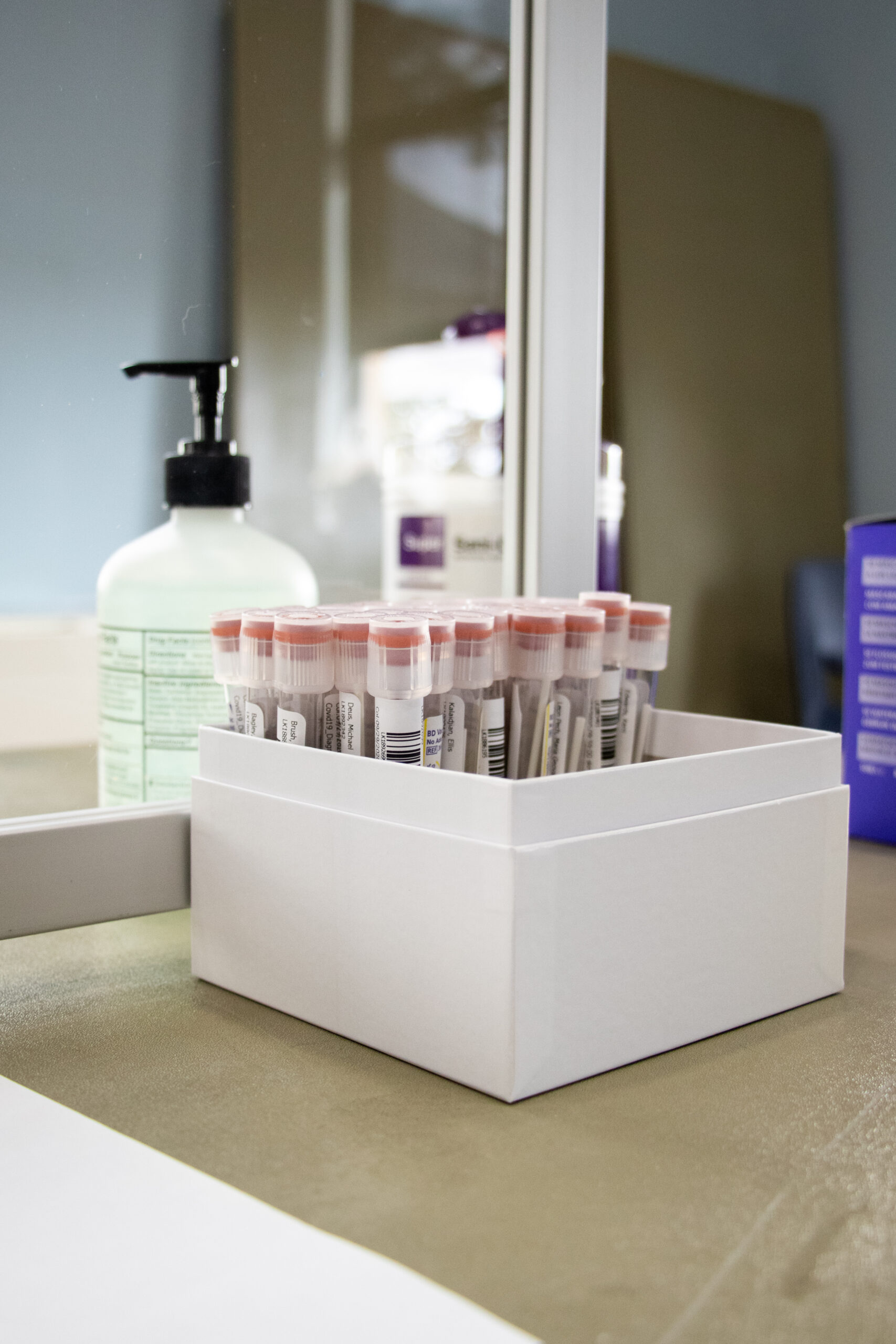The COVID positivity rate is staying stable. Photo by Siobhan Richards.
For this week’s update, we talked with administrators about what happens when the positivity rate rises, the importance of daily health assessments and more. Here’s what they had to say.
Test-positive rate remains fairly stable
The test-positive rate at the University has lingered between 2 and 4 percent for the last several weeks. The Centers for Disease Control and Prevention (CDC) is using a mark of 5 percent to determine whether or not an area is considered a “hotspot.”
“I think at the 5 percent [rate] we’ll grow concerned,” said Director of Health Services Ellen Reynolds.
If the University crosses the 5 percent threshold, there won’t be an automatic move to a fully virtual scenario like last semester, though, according to Reynolds.
“I think it’s going to [lead to] further conversations, looking at our outbreak, plan or cluster plan to see what spigots we have to turn on or turn off to try to get this under control,” Reynolds said.
The positivity rate is not the only metric that will determine whether or not there is a transition to entirely remote learning, according to Reynolds and Vice President for Student Affairs Kathy Collins.
“We’ve got approximately 550 to 600 quarantine and isolation beds,” said Collins, “if they get full, we’re going to have to make a tough decision.”
These university-provided beds are for students living on-campus only. Students living off-campus are to isolate and quarantine where they are living or at their permanent residence.
Cigar poll: 35 percent of surveyed students do not complete daily health screening
A recent Instagram poll by The Good Five-Cent Cigar found that 35 percent of respondents (39 out of 109) said that they did not complete the required daily health assessment before going to campus.
The daily assessment, which can be found online and on the RhodyConnect app, asks respondents if they have experienced any of the symptoms of COVID-19 that cannot be explained by other conditions, like allergies or asthma.
Both Reynolds and Collins said that they were “disappointed” that students said they were not completing the assessment.
“This is a daily reminder that somebody is healthy and well and should be reporting to classes or attending face-to-face classes on campus,” said Reynolds, “and it is an expectation and one of our health guidelines that all individuals coming to campus fill that out on a daily basis.”
People have to show the green check mark that comes with a passed assessment in order to enter some places on campus, such as the campus recreation centers and Health Services. Professors and employers have also been advised to ask students to show their checkmarks before coming into the classroom or workplace.
Reynolds also said that while in the past people may have gone to work and school while feeling ill, that is no longer an option.
“We would come to work when we were a little under the weather, because that was the expectation and our team needed us,” Reynolds said.“That’s no longer okay.”
Surveillance testing ramps up
Surveillance testing, which is the testing of asymptomatic community members in order to catch a potential outbreak early, has been increased on campus starting this week.
Those tests are now performed in the atriums in the Memorial Union instead of the Potter Building where Health Services resides. Previously, the University was able to do 500 tests weekly, compared to now, where they are able to do between 300 and 350 daily.
“We know how critically important it is for us to know what the true prevalence [of the virus] is in our community,” said Reynolds.
Students in the Colleges of Nursing, Pharmacy and Health Sciences have a variety of clinicals and experiential opportunities that require them to be working in public places like hospitals, pharmacies, offices and childcare centers. The University is providing them with testing if they need it, but many students are also able to be tested through their worksite.
How effective are the protocols in place at slowing the spread of the virus?
“It depends on who you ask,” said Collins, “I think we have students who are very upset [because they think] that we’ve done too much [and] I think we have students who are very upset that we’re not doing enough.”
Reynolds credits social distancing as well as the initial testing done on move-in weekend in helping keep the virus under control.
“We’re going into our fourth week, which is exciting,” Reynolds said. “Some people didn’t think we’d even get to four weeks, so I think that’s a success.”
Resources
Health Services can be reached at 401-873-2246.
Students can call the Counseling Center at 401-874-2288. The center’s normal business hours are Monday, Thursday and Friday 8:30 a.m. to 4:30 p.m. and Tuesday and Thursday 8:30 a.m. to 6:30 p.m. Outside of operating hours, students will be connected to ProtoCall, which provides behavioral health services over the phone.
The Psychological Consultation Center can be reached at 401-874-4264, and the Couple and Family Therapy Clinic can be reached at 401-874-5956.
For more information and stories in the coming days, check our website and Twitter @rhodycigar.

